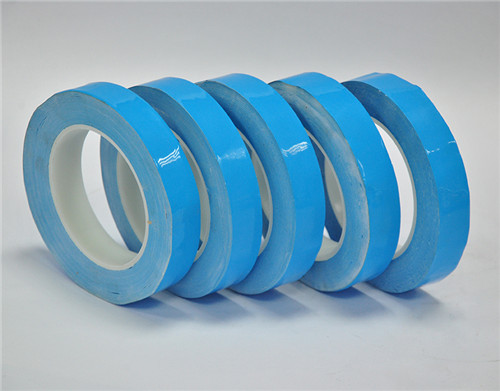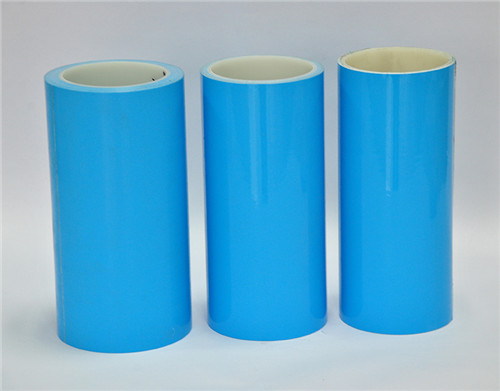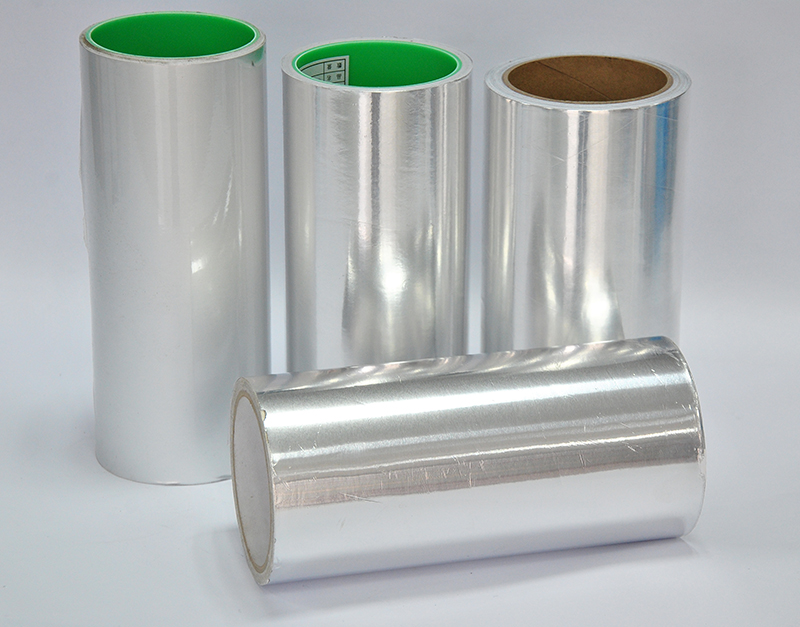What are the factors that affect the performance of thermal conductive adhesives
- Categories:Industry News
- Author:Toyan Electronics
- Origin:Toyan Electronics
- Time of issue:2019-02-14 10:15
- Views:
What are the factors that affect the performance of thermal conductive adhesives
- Categories:Industry News
- Author:Toyan Electronics
- Origin:Toyan Electronics
- Time of issue:2019-02-14 10:15
- Views:
The thermal conductivity of the filled adhesive mainly depends on the resin matrix, the thermally conductive filler and the interface formed by the two. The type, amount, particle size, geometry, mixed filling and surface modification of the thermally conductive filler will all affect the thermal conductivity of the adhesive. Performance has an impact.
1) Type and amount of thermal conductive adhesive filler
The type and amount of filler will affect the thermal conductivity of the adhesive. When the filler is small, the filler is completely wrapped by the matrix resin, and most of the filler particles cannot directly contact each other; at this time, the adhesive matrix becomes a heat flow barrier between the filler particles and inhibits the transfer of filler phonons, so no matter what is added No filler can significantly increase the thermal conductivity of the adhesive. As the amount of filler increases, the filler gradually forms a stable thermal conductivity network in the matrix. At this time, the thermal conductivity increases rapidly, and filling with high thermal conductivity filler is more conducive to improving the thermal conductivity of the adhesive. However, excessive thermal conductivity of the filler is not conducive to the improvement of the thermal conductivity of the system. Studies have shown that when the ratio of the thermal conductivity of the filler to the matrix resin exceeds 100, the increase in the thermal conductivity of the composite material is not significant.
The data shown in the previous research example is used to illustrate the relationship between the amount of filler and heat transfer performance. After adding a high thermal conductivity filler to the adhesive, the thermal conductivity of the composite material increases significantly with the increase in the amount of filler. Research shows: when w (synthetic diamond SD) = 20% (relative to the mass of epoxy resin EP), the thermal conductivity is 0.335 W (/ m·K); when w (SD) = 50%, the thermal conductivity is 0.335 W (/ m·K); The conductivity is 1.07 W(/ m·K), which is 3.5 times higher than that of pure resin; when w(SD)<20%, the thermal conductivity of the system increases slowly; when w(SD)>20%, the thermal conductivity of the system The thermal conductivity rises rapidly. This is because when w(SD)>20%, the particles start to contact each other and gradually form a heat-conducting chain; when w(SD)=50%, a large amount of contact between the particles forms a heat-conducting network, so the thermal conductivity is significant improve
Thermal conductive glue
2) The particle size and geometry of the thermal conductive adhesive filler
When the amount of thermal conductive adhesive filler is the same, nano particles are more conducive to improving the thermal conductivity of the adhesive than micro particles. The quantum effect of nanoparticles increases the number of grain boundaries, so that the specific heat capacity increases and the covalent bonds become metal bonds. The heat conduction changes from molecular (or lattice) vibration to free electron heat transfer, so the thermal conductivity of nanoparticles is relatively higher. High; At the same time, the small particle size and large number of nanoparticles make their specific surface area large, and it is easy to form an effective heat-conducting network in the matrix, so it is beneficial to improve the thermal conductivity of the adhesive.
For micron particles, when the amount of the filler is the same, the thermally conductive filler with large particle size has a smaller specific surface area and is not easy to be wrapped by the adhesive. Therefore, the probability of connection with each other is greater (it is easier to form an effective heat conduction path), which is conducive to the improvement of the thermal conductivity of the adhesive. .
A specific case study shows that when the amount of filler is the same, the thermal conductivity of the Al2O3 system containing 30 nm is relatively highest, the thermal conductivity of the Al2O3 system containing 20 μm is the second, and the thermal conductivity of the Al2O3 system containing 2 μm is relatively high. lowest. This is because when the amount of filler is the same, the specific surface area of nanoparticles is larger than that of microparticles, and the huge specific surface area makes it more likely to form a thermal network than microparticles; for the 20, 2 μm Al2O3 filled system, the smaller particle size It has a larger specific surface area and more phase interfaces in contact with the matrix, which makes it easier to be wrapped by the matrix and cannot form an effective heat conduction network. Therefore, the thermal conductivity of the 2 μm Al2O3 filled system is relatively lowest.
When the amount of filler is the same, the probability of the thermal network formed by the same filler of different geometric shapes in the matrix is different, and the thermally conductive filler with a larger aspect ratio is easier to form a thermal network, which is more conducive to improving the thermal conductivity of the matrix. The above figure shows that when φ (nano-level silver wire) = 26% (relative to the volume of epoxy EP adhesive), the seepage threshold is reached, and the thermal conductivity increases from 5.66 W (/ m·K) to 10.76 W (/ m·K); when φ (nano-scale silver rod) = 28%, φ (nano-scale silver block) = 38%, the seepage threshold is reached; the larger the aspect ratio, the smaller the seepage threshold. Compared with silver rods and silver blocks, silver wires with a large aspect ratio increase the probability of forming a thermally conductive network chain in the resin system due to their orientation, and a higher thermal conductivity can be achieved when there are fewer fillers.
3) Mixed filling of thermal conductive adhesive filler
Compared with a single particle size filler filling system, the mixed filling of different particle sizes and the same type of filler is more conducive to improving the thermal conductivity of the adhesive. The mixed filling of the same type of filler with different forms is easier to obtain an adhesive with high thermal conductivity than the filling of a single spherical filler. When different types of fillers are properly proportioned, hybrid filling is also better than single type of filler filling. This is due to the fact that the above-mentioned hybrid filling is easier to form a close-packed structure, and the particles with high aspect ratio are easy to bridge between the spherical particles during the hybrid filling, thereby reducing the contact thermal resistance and making the system relatively higher. The thermal conductivity. Research shows that when w(AlN)=80% (relative to the quality of silicone rubber) and the particle size is 15, 5 μm, the thermal conductivity of the system is 1.83 and 1.54 W(/ m·K) respectively; When the total amount of AlN remains unchanged and the mass ratio of the two particle sizes is 1:1, the thermal conductivity of the system is 1.85 W (/ m·K). The thermal conductivity of large and small particle size doping is higher than that of single particle size. This is because when large and small particle size doping, small particle size particles are more likely to be filled into the voids of large particle size particles (increased density), making the particles The contact between them is closer, and the packing density inside the matrix increases (reducing the contact thermal resistance), thereby increasing the thermal conductivity of the system.
4) Surface modification of thermal conductive adhesive filler
There is a difference in polarity between the inorganic particles and the resin matrix interface, resulting in poor compatibility between the two, so the filler is easy to aggregate in the resin matrix (not easy to disperse). In addition, the large surface tension of the inorganic particles makes the surface more difficult to be wetted by the resin matrix, and there are voids and defects between the phase interfaces, thereby increasing the interface thermal resistance. Therefore, modifying the surface of inorganic filler particles can improve its dispersion, reduce interface defects, enhance interface bonding strength, suppress the scattering of phonons at the interface, and increase the free path of phonon propagation, thereby helping to increase the heat of the system. Conductivity.
Related News

Address: Building H, No. 93, Daxin Road, Dazhou Community, Qiaotou Town, Dongguan City
E-mail:dongyan_tech@126.com
Fax:0769-82283852
Tel:0769-85305921
COPYRIGHT © 2021 Dongguan Dongyan Electronic Material Technology Co., Ltd. ALL right SERVER




